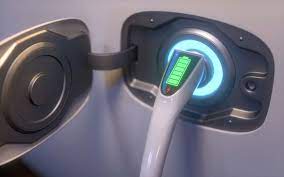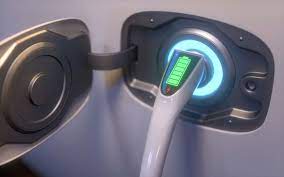
As demand for EV batteries for the first time surpasses other applications for the mineral due to increasing EV sales, automakers, including Tesla and Mercedes, are scrambling to lock in graphite supply from outside dominating producer China.
Despite the fact that graphite is the largest battery component by weight, auto companies have been slow to prepare for graphite shortages, concentrating mostly on the more well-known battery components lithium and cobalt.
Now that EVs are anticipated to account for more than 50% of the natural graphite market for the first time this year, consulting firm Project Blue reports that automakers are knocking on the doors of new sources, including as Madagascar and Mozambique.
As legislation in the United States and Europe tries to reduce reliance on China for crucial minerals, shortages of material produced outside of China may become progressively more acute.
"Automakers are in a real bind because there's been no investment in Western graphite," said Mark Thompson, founder and managing director of Australia's Talga Group Ltd, which plans to launch production next year in Sweden.
The anodes, or the negative electrodes of a battery, require 50–100 kg of graphite per EV, which is roughly twice as much as lithium.
Graphite has primarily been used in the steel sector, but according to BMO Capital Markets, EV sales will increase by more than three times to 35 million by 2030 from 2022 levels.
According to Project Blue forecasts, there will be a 777,000-ton worldwide supply gap in graphite by 2030, and shortages are predicted to worsen over the following years.
According to a survey by Benchmark Mineral Intelligence (BMI), the graphite industry will need to invest over $12 billion by 2030 and open 97 new mines by 2035 to keep up with demand.
According to BMI, China produces 98% of the final processed material used to build battery anodes and 61% of the world's natural graphite.
According to Thompson, the Talga group is looking to supply both battery manufacturers like Sweden's Northvolt and automakers like Tesla, Toyota, and Ford.
Ford Motor Co. and Toyota Motor Corp. declined to comment, while Tesla Inc. and Northvolt did not respond to a request for comment.
With Stellantis and Renault, two European battery manufacturers with connections to Mercedes-Benz, Talga has already inked non-binding supply agreements.
Mercedes stated that it was diversifying the sources of raw materials, including graphite, and "have been in dialogue with various suppliers for some time".
"All the car companies are now scrambling to understand how to source battery materials at the mine level," said Brent Nykoliation, executive vice president of NextSource Materials.
NextSource, which opened a mine in Madagascar in April, is also in contact with auto manufacturers, though it insisted that the specifics are private.
With agreements with Syrah Resources, which runs a mine in Mozambique, and with Magnis Energy Technologies, Tesla has been in the vanguard of securing graphite.
One of the only factories being developed outside of China that can change graphite for use in batteries is Syrah's U.S. processing facility.
Talga intends to build a factory in Sweden, while NextSource is constructing a processing facility in Mauritius.
However, Western processing activities will expand gradually.
"China is still incredibly dominant in the graphite space and we anticipate they will maintain dominance for years to come," said George Miller, senior analyst at BMI.
According to BMI, China will still have 79% of the uncoated spheroidized purified graphite manufacturing market share by 2032, down from 100% in 2022.
Because of this Chinese market influence, it might be challenging for manufacturers to meet the requirements for EV subsidies under the U.S. Inflation Reduction Act.
The IRA mandates that a specific high proportion of battery components be made in the United States or in a nation with whom it has free trade agreements.
By 2030, the European Union wants to reduce reliance on any one nation for any important raw commodity to 65%.
Deals for the supply of graphite are difficult to reach because each model of electric vehicle must undergo comprehensive safety testing, which can take up to three years.
Because producing anodes from natural materials uses around 55% less carbon than producing them from synthetic graphite generated from petroleum products, Western auto groups are concentrating on deals with graphite mines.
Natural graphite anodes are typically less expensive and improve cell capacity and power output, enabling cars to go farther between charges.
According to Project Blue expert Reitumetse Chalale, competition with the steel sector is also anticipated.
The addition of silicon to an anode increases the range of an electric vehicle (EV) between charges.
The greatest quantity of silicon that can currently be put to batteries is around 10% because the substance expands while being used and could harm the battery.
Technology that might permit bigger volumes of silicon is being developed by businesses. If effective, that might pose a long-term risk to graphite.
(Source:www.reuters.com)
Despite the fact that graphite is the largest battery component by weight, auto companies have been slow to prepare for graphite shortages, concentrating mostly on the more well-known battery components lithium and cobalt.
Now that EVs are anticipated to account for more than 50% of the natural graphite market for the first time this year, consulting firm Project Blue reports that automakers are knocking on the doors of new sources, including as Madagascar and Mozambique.
As legislation in the United States and Europe tries to reduce reliance on China for crucial minerals, shortages of material produced outside of China may become progressively more acute.
"Automakers are in a real bind because there's been no investment in Western graphite," said Mark Thompson, founder and managing director of Australia's Talga Group Ltd, which plans to launch production next year in Sweden.
The anodes, or the negative electrodes of a battery, require 50–100 kg of graphite per EV, which is roughly twice as much as lithium.
Graphite has primarily been used in the steel sector, but according to BMO Capital Markets, EV sales will increase by more than three times to 35 million by 2030 from 2022 levels.
According to Project Blue forecasts, there will be a 777,000-ton worldwide supply gap in graphite by 2030, and shortages are predicted to worsen over the following years.
According to a survey by Benchmark Mineral Intelligence (BMI), the graphite industry will need to invest over $12 billion by 2030 and open 97 new mines by 2035 to keep up with demand.
According to BMI, China produces 98% of the final processed material used to build battery anodes and 61% of the world's natural graphite.
According to Thompson, the Talga group is looking to supply both battery manufacturers like Sweden's Northvolt and automakers like Tesla, Toyota, and Ford.
Ford Motor Co. and Toyota Motor Corp. declined to comment, while Tesla Inc. and Northvolt did not respond to a request for comment.
With Stellantis and Renault, two European battery manufacturers with connections to Mercedes-Benz, Talga has already inked non-binding supply agreements.
Mercedes stated that it was diversifying the sources of raw materials, including graphite, and "have been in dialogue with various suppliers for some time".
"All the car companies are now scrambling to understand how to source battery materials at the mine level," said Brent Nykoliation, executive vice president of NextSource Materials.
NextSource, which opened a mine in Madagascar in April, is also in contact with auto manufacturers, though it insisted that the specifics are private.
With agreements with Syrah Resources, which runs a mine in Mozambique, and with Magnis Energy Technologies, Tesla has been in the vanguard of securing graphite.
One of the only factories being developed outside of China that can change graphite for use in batteries is Syrah's U.S. processing facility.
Talga intends to build a factory in Sweden, while NextSource is constructing a processing facility in Mauritius.
However, Western processing activities will expand gradually.
"China is still incredibly dominant in the graphite space and we anticipate they will maintain dominance for years to come," said George Miller, senior analyst at BMI.
According to BMI, China will still have 79% of the uncoated spheroidized purified graphite manufacturing market share by 2032, down from 100% in 2022.
Because of this Chinese market influence, it might be challenging for manufacturers to meet the requirements for EV subsidies under the U.S. Inflation Reduction Act.
The IRA mandates that a specific high proportion of battery components be made in the United States or in a nation with whom it has free trade agreements.
By 2030, the European Union wants to reduce reliance on any one nation for any important raw commodity to 65%.
Deals for the supply of graphite are difficult to reach because each model of electric vehicle must undergo comprehensive safety testing, which can take up to three years.
Because producing anodes from natural materials uses around 55% less carbon than producing them from synthetic graphite generated from petroleum products, Western auto groups are concentrating on deals with graphite mines.
Natural graphite anodes are typically less expensive and improve cell capacity and power output, enabling cars to go farther between charges.
According to Project Blue expert Reitumetse Chalale, competition with the steel sector is also anticipated.
The addition of silicon to an anode increases the range of an electric vehicle (EV) between charges.
The greatest quantity of silicon that can currently be put to batteries is around 10% because the substance expands while being used and could harm the battery.
Technology that might permit bigger volumes of silicon is being developed by businesses. If effective, that might pose a long-term risk to graphite.
(Source:www.reuters.com)





